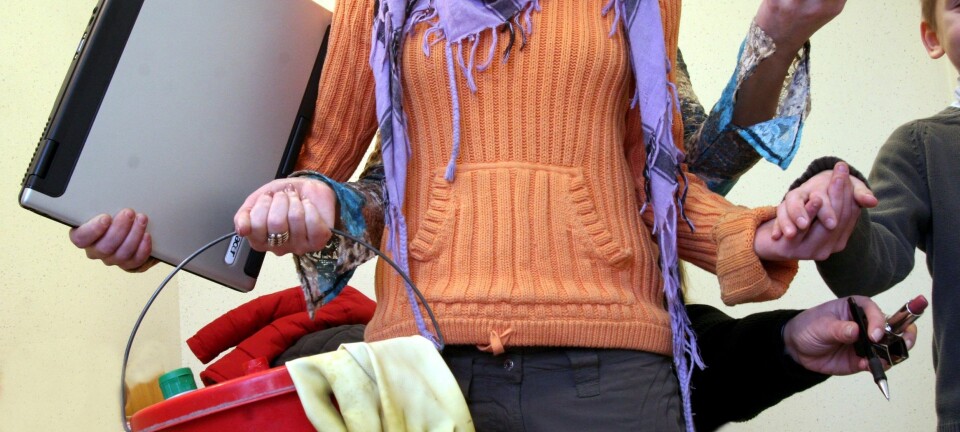Hypnotically induced stare captured on camera
Researchers have found an objective and replicable way of determining if a person is in a hypnotic state. You can see it in the eyes of the test subject in the following video.
By uttering a single word, Sakari Kallio can take the highly hypnotisable test person in and out of a hypnotic state. When the person is under hypnosis their eyes look glazed and their blinking frequency is drastically reduced. This is the so-called “trance stare”, which researchers prefer to call a hypnotically induced stare.
Scientists disagree as to whether or not hypnosis is real. Are subjects who are said to be hypnotised just allowing themselves to be guided by suggestion, empathy, fantasy and their own notions? Or is hypnosis objectively measurable as an altered state of mind?
“We have studied a few control subjects who are highly receptive to hypnosis and found proof that hypnosis can affect, and even change, how they consciously perceive an object,” says Associate Professor Sakari Kallio of Skövde University College (HIS) in Sweden.
“Automatic processes in the brain, such as perception of colours, are modified during hypnosis, which means their consciousness is altered,” he explains.
Swedish and Finnish researchers have found concrete, objective signs that show a person is hypnotised.
“By observing raised levels of high-frequency activity in the brain of test subjects, their reaction times and automatic as well as controlled eye movements, we’ve seen that hypnosis is really authentic and objectively measurable,” says Kallio.
Automatic hallucination
In part of the study two female test subjects were shown various figures of different colours on a computer screen. The figures were shown one at a time on different areas of the screen and the test subjects were assigned the task of naming the colours of the various figures. Afterwards they were hypnotised and informed that all the squares were red.
“The test persons didn’t all react as well to the hypnotic suggestion, but one of them clearly saw all the squares as red, even though they were in completely different colours,” says the researcher.
“And by performing other tests, such as measuring the level of high-frequency brain activity, we saw that this test person changed the colour of the square to red long before she was conscious of the figure appearing on the computer screen.”
“In other words her brain wasn’t capable of seeing the square as any other colour than red – which means she wasn’t capable of using her own imagination or sensitivity. Her perception of the object, via hypnosis, had been affected,” says Kallio.
He said the result shows that hypnosis is not something the individual can affect, but is rather the result of a hallucination of which the subject is unaware.
Hypnotising with a word
Around 60 to 70 percent of the population can sense something through hypnosis, but only a couple of percent are as extremely hypnotisable as the woman in the video.
“The test persons were selected from larger groups according to their susceptibility to hypnosis. Nobody knows why some people are easier to hypnotise than others. But I can hypnotise one of these test persons with a single word,” says Kallio.
He says it’s easy to see when a person actually enters a hypnotic state.
“The eyes change and we get what the literature calls a hypnotic stare, for example. This has never been documented until now, but we have it on video. Eye specialists who participated in the study saw clear changes in the eye reflexes and the pupils in this hypnotic stare.”
“They couldn’t explain it but indicated that it was reminiscent of changes that are observed in pathological brain conditions,” says Kallio.
Like dreams
The remarkable research results have been recently published in a number of journals.
“When we examine the brains of people under hypnosis, we see activity in the frontal part of the brain and connections to other parts are nearly cut off," Kallio says.
"A hypnotised person is not actively reacting to their environment unless they are specifically asked to. We see something like that happening when we are dreaming – we just allow ourselves to be carried away.
Kallio is currently working on a new hypnosis experiment using the woman who is extremely receptive.
“She is being told under hypnosis that there are two pencils on the table when there is actually just one. Or alternatively, one when there are two. So far she sees what I ask her to see under hypnosis and this appears to persist. The next day she sees the same thing. But it’s too early to draw any conclusions from these experiments,” stresses Kallio.
What significance can these findings have for medicine?
“Unfortunately only a small percentage of the population can be hypnotised. We also need much more research on hallucinations and human consciousness. But maybe this will turn out to have an impact on psychology, and our understandings of memory function and perception,” he says.
---------------------------------
Read the Norwegian version of this article at forskning.no
Translated by: Glenn Ostling





